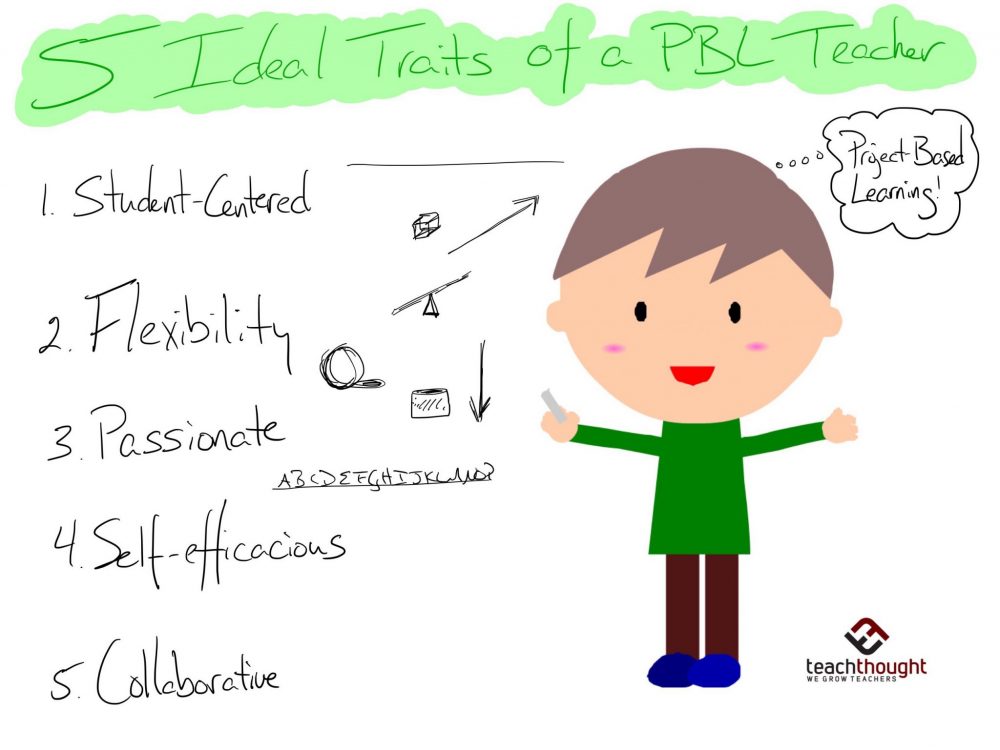
5 Ideal Traits Of A PBL Teacher
contributed by Mike Kaechele
Over the past few years, I have worked with many teachers, introducing the components of Project-Based Learning (PBL) and helping them design their own projects.
Sometimes it has been a teacher’s first attempt at PBL and other times, it has been more of a fine-tuning of something they already do in their classroom. I see some teachers jump right in the deep end with complex—projects that they design themselves or alongside students, while others start more slowly with simpler projects. This post is not a judgment of the teachers who start PBL more gradually. Everyone needs to take their own pace with the switch to PBL so that they are comfortable and find success.
If it’s not sustainable, what’s the point?
In working with the dive-right-in teacher type, here are five things that I have observed. Note these traits are just predictors of an easier transition to teaching through project-based learning. Obviously, there are exceptions, and other characteristics may be more or less useful depending on the specific context and application.
See also 8 Characteristics Of A Great Teacher
5 Ideal Traits Of A Project-Based Learning Teacher
1. Student-centered
The most important shift toward PBL is about giving up total teacher control of the classroom.
We don’t want students to ‘drown’ from a lack of structure, but to thrive as they take ownership of their learning. My shortest summary of PBL is: “Less of us (teachers), more of them (students).” Teachers who are willing to give students more freedom, voice, and choice in their classrooms find PBL a natural fit.
Classrooms may be a bit chaotic (ordered chaos) at times, but student-centered teaching ‘knows’ that silence and order often indicate compliance rather than engagement and learning. Student-centered classrooms focus on a culture of caring and relationships over rules, standards, and curriculum.
These teachers focus on the why over the what. They are more focused on enduring understandings of their curriculum and success skills, than on individual standards without context.
2. Flexible
PBL does not fit in a box.
When students are driving learning through inquiry, the ‘lesson plan’ often takes detours down interesting paths. The logistics of a project usually have unforeseen difficulties: a community partner cancels their guest speaking engagement, student filming and editing take longer than expected, or technology falls through.
Student groups always have challenges because they are kids who are learning to communicate and work together. Flexible teachers are adaptable to whatever gets thrown at them. That doesn’t mean that they aren’t stressed at times (especially the day of a showcase!) but that they are comfortable improvising when necessary.
Flexible teachers are not afraid of things being messy at times.
3. Passionate
Is a teacher curious about learning outside of her content area? Is she a creative maker in her free time? Does she geek out about her hobbies in front of the class? The edujargon here would be that she is a lifelong learner. Passion is contagious! Passionate teachers connect with students by sharing their own interests and hobbies and make the classroom emotionally safe for students to do the same.
This leads to the teacher designing projects where students design solutions according to their strengths and connected to their interests. Passionate teachers also enjoy designing curriculum, not just teaching from a book or pacing guide because one of their passions is the subject that they teach.
They are always reflecting on how to make their content fun and accessible to their students.
4. Self-efficacious
Most teachers are willing to go above and beyond stated duties, but this is more about taking on something outside of your curriculum. It may be a school club or coaching. It may be leading the production of a play. It may be a personal project totally outside of school.
Teachers with strong self-efficacy are comfortable managing the ‘messy middle’ of PBL and don’t need a curriculum guide to tell them what to teach next. Note: this is not about being a super hero and killing yourself. These teachers say ‘no’ to things like committees, grading homework, and voluntary meetings.
Instead, self-efficacious teachers prioritize their time to specific things related to the project that they care about.
5. Collaborative
Truly authentic projects usually involve an integration of content. Collaborative teachers are willing to work with others outside of their subject area to address engaging cross-curricular problems. PBL also requires collaboration with community partners so teachers need to be comfortable reaching out to experts in fields that they may know little about.
Collaborative teachers aren’t afraid of a lack of knowledge or skill about something related to the project because they can reach out to experts and learn alongside their students. They are also modeling for students how to successfully work in groups building on everyone’s strengths. Some of the best collaborative teachers that I know have even collaborated with their students outside of school.
One of the great things about this list is that these are not inherent characteristics that we are born with or without. They are traits and attitudes that we can grow in if we make a conscious choice! What are your strongest PBL teaching traits? What would you add to this list?
Hat tip to Teresa, Chris, Anthony, Dave, Justin, Matt, JoAn, Randi, Kiffany, and Drew for contributing to my thinking on this post; 5 Ideal Traits Of A Project-Based Learning Teacher
